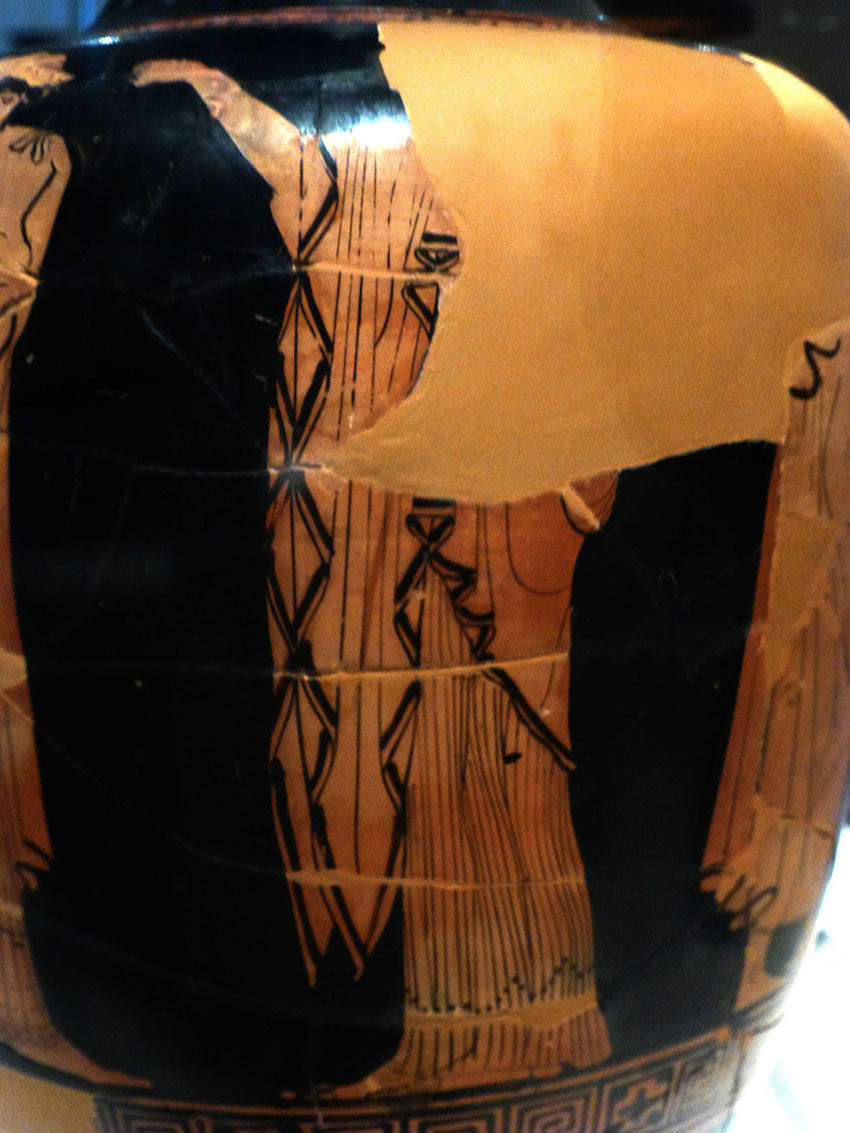OLYMPIC TORCH CEREMONY COSTUMES RESEARCH | RE-DISCOVERING AND RE-EXPLORING THE ARCHAEOLOGICAL MUSEUM

The Archaeological Museum Courtyard
There is nothing like a primary source, and for a project like this I needed to remind myself of the world I was entering, to re-enter it – the world of Classical Greece. So I stepped into The Archaeological Museum Athens, and my little camera and I wondered through fragments of this prime and pivotal moment in humanity’s history. So I tried to soak up as much as I could from that world, as everything is relevant, but with a focus on womenswear – primarily the dress of female dancers and that of priestesses and high priestesses in Classical Greece.
I looked at vase painting and sculpture. In both cases dress is always depicted with a strong sense of rhythm, normally through the folds in drapery, but also in rhythmic, geometric border designs and layering, often in combination with pleating or gathering. Varying surface patterns, textures and materials are also common elements in the dress design. Animal skins are often seen in combination with dress fabrics. I also took note of varying means of fastening; tying and harnessing that were used. It was also interesting to see how dress depictions always hold the female form as a strong reference point. In painting it is seen by often depicting the outline of the female form through the dress, even though in most cases dress was never transparent. In sculpture it is seen through ‘wetted drapery’ where dress hugs the form in a way that it wouldn’t have in reality (unless it were wet). This referencing to the female silhouette and shape often amplifies the sense of body form and body movement within the garment. Another observation I made was how motifs that appear decoratively on vases are also seen at times as patterns on dress too. This included olive leaf and foliage motifs. All of this research directed my design process.

























It is worth noting that my design research was accompanied by reading several books: Women's Dress in the Ancient Greek World, Portrait of a Priestess: Women and Ritual in Ancient Greece (Dressing the Part), Greek Dress: A Study of the Costumes Worn in Ancient Greece, from Pre-Hellenic Times to the Hellenistic Age (Classic Reprint), How to Read Greek Vases (Metropolitan Museum of Art) & The Greek Vase: Art of the Storyteller.





































